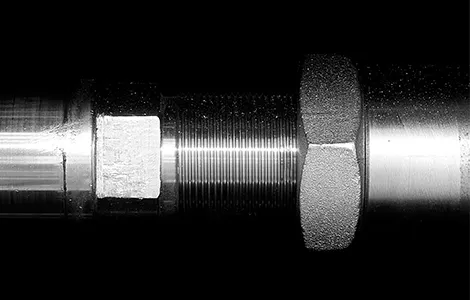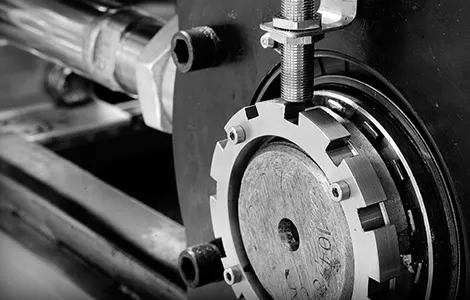Steel Belting Maintenance Myths: Separating Fact from Fiction
April 15, 2025
Steel belts are widely recognised for their durability, efficiency, and reliability across various industries, from food processing to heavy manufacturing. Yet, despite their advantages, misconceptions about steel belting maintenance persist, often leading to unnecessary costs, premature replacements, or incorrect servicing practices.
In this blog, we’ll debunk common myths about steel belting maintenance and provide practical tips to help businesses maximise their belt’s lifespan with minimal downtime.
Myth #1: Steel Belts Require Frequent Replacement
Fact: Properly maintained steel belts can last for decades.
One of the most common misconceptions is that steel belts need to be replaced frequently, similar to fabric or rubber alternatives. In reality, steel belts have an exceptionally long lifespan when maintained correctly.
- Unlike fabric belts, steel does not stretch, fray, or absorb moisture, reducing deterioration over time.
- Stainless steel belts resist corrosion, wear, and temperature extremes, making them ideal for demanding environments.
- Preventative maintenance, including regular inspections and minor repairs, can keep steel belting operational for years, if not decades.
Tip: Conduct routine belt tension and alignment checks to prevent premature wear and extend longevity.
Myth #2: Steel Belting is Difficult to Repair
Fact: Steel belts are repairable with the right expertise.
Many believe that once a steel belt develops cracks, dents, or surface damage, it must be replaced. However, professional repair services can restore steel belts without compromising performance. Repairable issues include:
- Minor cracks or tears can be repaired through specialised welding or patching.
- Edge damage can be corrected with grinding or reinforcement techniques.
- Misalignment issues can be resolved with belt tracking adjustments.
Tip: Regular belt inspections help identify minor issues before they become costly failures. Addressing small surface defects early can prevent more extensive damage down the line.
Myth #3: Steel Belts Require Extensive Lubrication
Fact: Most steel belts require little to no lubrication.
Unlike chain-driven or synthetic belt systems, steel belting operates efficiently with minimal lubrication. Over-lubrication can actually attract dust and debris, leading to contamination and accelerated wear. When lubrication is necessary, it should be:
- Food-grade (for food processing applications).
- Applied sparingly to prevent buildup.
- Selected based on the operating environment.
Tip: Check manufacturer guidelines before applying lubricants, as many modern steel belt systems are designed to run without them.
Myth #4: Steel Belt Maintenance Causes Excessive Downtime
Fact: Routine maintenance minimises downtime and prevents costly failures.
While any maintenance requires some level of downtime, proactive steel belt maintenance is designed to be efficient and minimally disruptive.
Best practices for efficient maintenance:
- Scheduled maintenance during off-peak hours reduces production interruptions.
- Predictive monitoring tools help detect early signs of wear, preventing unexpected breakdowns.
- Quick repair solutions (such as on-site belt patching or tension adjustments) allow minor fixes without full system shutdowns.
Steel belts are low-maintenance, durable, and cost-effective, but misconceptions about their upkeep can lead to unnecessary costs and downtime. By following proper maintenance practices, businesses can ensure long-lasting performance and minimal disruptions.
For expert steel belting maintenance, inspections, and repairs, contact PACE today to learn how we can help optimise your conveyor systems. Alternatively, if you find yourself with more burning questions about steel belt maintenance, take a look at our FAQ section below:
Steel Belting Maintenance FAQs:
1. How often should steel belts be inspected?
Steel belts should be visually inspected weekly and undergo a detailed professional inspection at least once a year, depending on usage intensity and industry requirements.
2. What are the early warning signs of steel belt wear?
Common signs include misalignment, visible surface cracks, excessive noise, tension loss, or irregular tracking. Addressing these issues early can prevent costly failures.
3. Can a steel belt be repaired on-site, or does it need to be sent out?
Many minor welds, patches, and tracking adjustments can be made on-site by trained professionals. For major repairs, it may be necessary to send the belt to a specialised service centre.
4. What cleaning methods are best for steel belts?
Use food-safe, non-abrasive cleaners for food processing applications and industrial degreasers for manufacturing environments. Avoid harsh chemicals or abrasive scrubbing that could damage the belt surface.
5. What is the typical lifespan of a well-maintained steel belt?
With proper maintenance, steel belts can last 10-20 years or more, significantly outlasting fabric or rubber alternatives.
6. Can steel belts be used in high-humidity environments without rusting?
Yes, stainless steel grades are designed to resist corrosion in humid conditions. However, proper cleaning and drying are required to prevent buildup.
7. How do I prevent steel belts from misaligning over time?
Regularly check belt tracking, tension, and pulley alignment to ensure smooth operation. To maintain perfect alignment, discover our very own PACEMatic automatic steel belt tracking system.
8. Are steel belts energy-efficient compared to other conveyor belts?
Yes, steel belts have low friction and efficient heat transfer, reducing energy consumption in applications like baking and drying.
9. Can improper belt tension damage a steel belt?
Yes, over-tensioning can cause stress fractures, while under-tensioning can lead to slippage and inefficient operation. Regular tension checks are essential.

